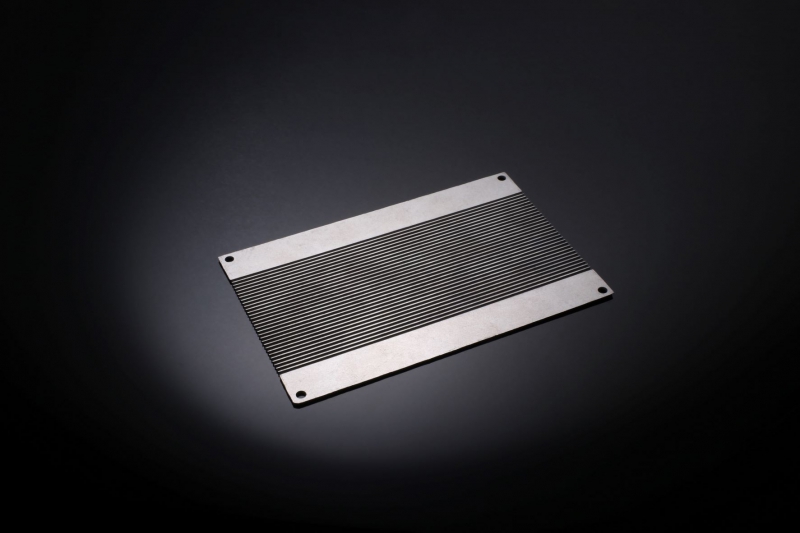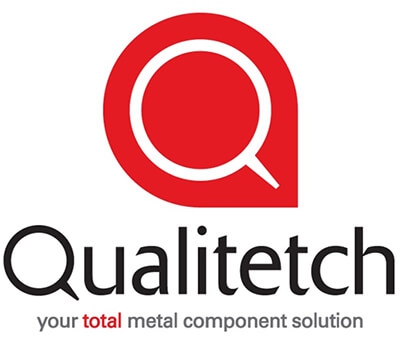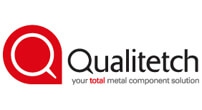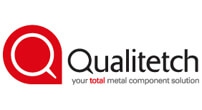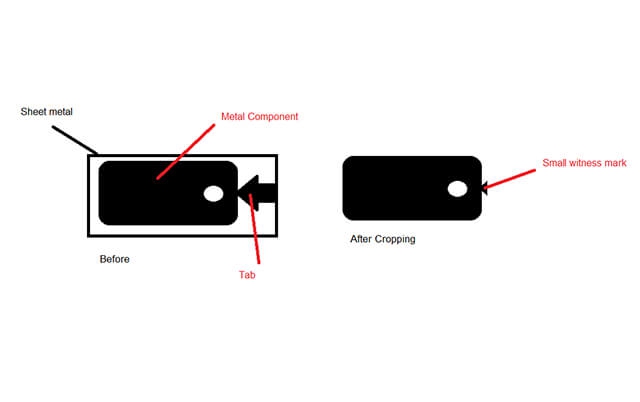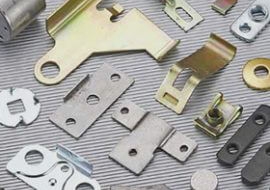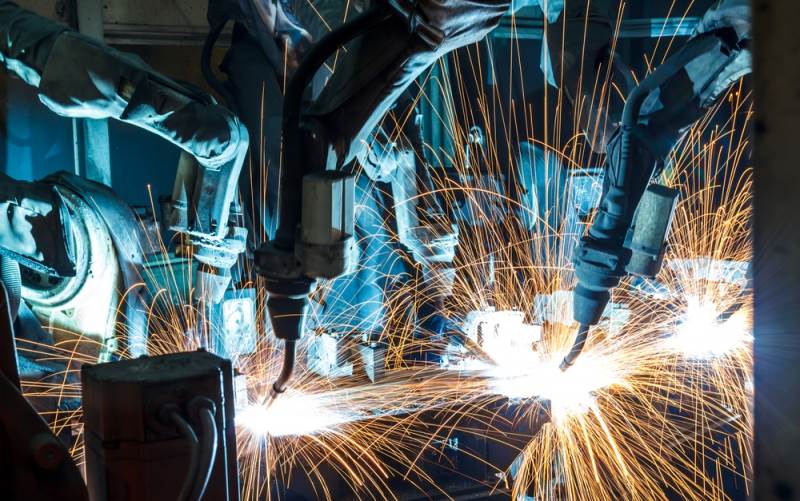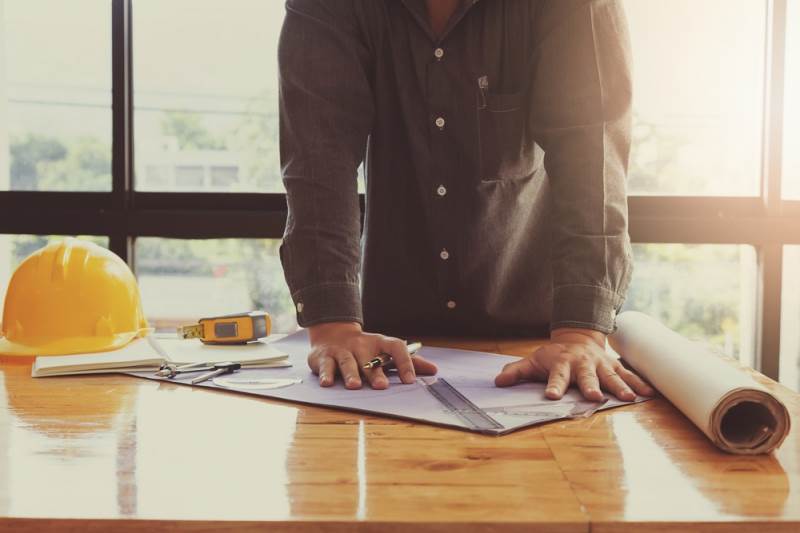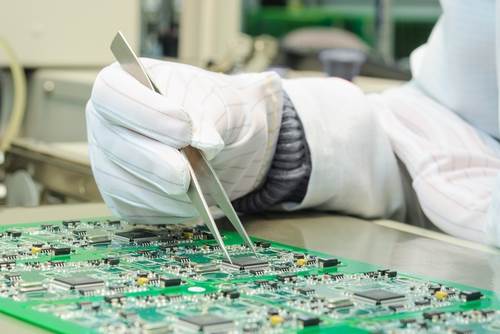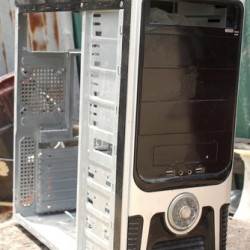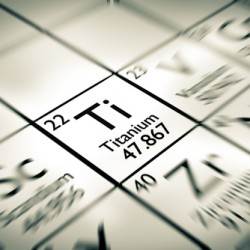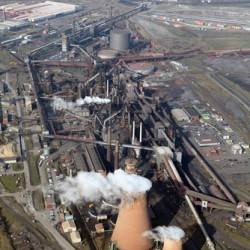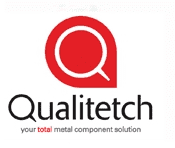- Contact 0870 350 7767
- |
- Advertise
Burr-free, Stress-free, metal components achieved through photo etching
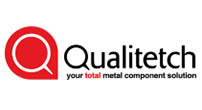 News and PR from Qualitetch Components Ltd - Published 06 November 2019
Photo etching has many benefits for anyone looking to manufacture components from thin gauge sheet metal (namely 10um – 1.6mm thick).
News and PR from Qualitetch Components Ltd - Published 06 November 2019
Photo etching has many benefits for anyone looking to manufacture components from thin gauge sheet metal (namely 10um – 1.6mm thick). As the chemicals are passively subtracting the exposed metal, they are not generating any substantial force against the metal, unlike traditional methods such as metal stamping which uses high tonnage machines to punch through the material grain structure, which results in deformation of the surrounding area on the parts profile.
What is a Burr? And where do they originate?
If a process removes metal, it’s highly likely that it will generate burrs, with these raised edges of the metal often degenerate to the part and can cause fatiguing or even shear surrounding cables (if used within electrical applications). This said, the burr must be removed by hand as a post process, which can prove expensive. If you can imagine drilling through a piece of flat sheet metal, you are applying a downward force to drive the flutes through and the newly displaced metal has nowhere to go but out through the entrance hole, however, as you breach the bottom the metal can essentially fold itself around the exit hole whilst remaining attached to the sheet metal, this is known as an “exit burr”.
What do you mean, Stress-Free?
Traditional manufacturing techniques such as metal stamping see heavy tooling punch down on the metal surface in order to separate the material by force. By doing this it generates a force on the metal surrounding the area of removal which can alter the material grain structure causing the material to behave differently, or even reduce the structural integrity resulting in total-part failure. Photo etching doesnÂ’t introduce any pressure or contact onto the material, as we are simply exposing the metal to a liquid solution evenly sprayed over a UV photo sensitive resist mask.
Case Study: Fine Filter Mesh
An OEM approached us requiring a large burr free, stress free mesh. traditional methods would require individual deburring procedures for each aperture which is both time-consuming and costly. As detailed above the etching process is a burr-free, stress-free procedure making the need for any expensive post-processing procedures redundant.
Further to the above, this project was in the early development stages, this meant that the OEM required multiple iterations to determine the most viable design. At Qualitetch we offer free photo-tooling artwork to our customers, as we believe in investing in our customers future growth. This proved particularly advantageous as we were able to turn around a dozen variations within a few days rather than weeks, and at no additional hard tooling costs that would be present with the traditional manufacturing techniques.
Other announcements from Qualitetch Components Ltd
-
Bipolar Plate manufacture & hydrogen fuel cells & Electrolysers using etching
Fuel cell engineers should take chemical etching into consideration when manufacturing plates, for hydrogen fuel cells and electrolysers. There are reasons why this method's advantageous;
09 Feb 2024
-
Qualitetch Components Ltd has successfully achieved AS9100D recertification
Qualitetch Components Ltd has successfully achieved AS9100D recertification, underscoring our commitment and adherence to the rigorous quality management practices essential for the aerospace industry
04 May 2023
-
Qualitetch 30th Birthday!
This week at Qualitetch Components we celebrate 30 years of offering world class metal component solutions for photo chemical etching, EDM wire erosion & metal stamping to all our worldwide customers.
28 Jan 2020
-
Qualitetch completes ISO AS9100 Rev D aerospace accreditation
Qualitetch are pleased to announce that following recent audits, we have now achieved the revised ISO AS9100 Rev D standard aerospace accreditation with NQA.
06 Nov 2019
-
Case Study - Chemical Etching Product Innovation
Chemical etching has been around for centuries; however, it’s only in modern times that we are starting to utilize its full potential.
06 Nov 2019
-
Chemical etching tabs– An in-depth view
For most metal components we manufacture here at Qualitetch, tabbing parts into the surrounding fretwork sheet for processing can really help for several reasons.
06 Nov 2019
-
Qualitetch continues to offer FREE photo-tooling for both New & Existing parts!
Qualitetch continue to offer FREE photo-tooling artwork for both new and existing parts.
06 Nov 2019
-
Start-up makes robots that small manufacturers can afford
Collaborative robots market expected to snowball to $12.3bn by 2025
02 May 2019
-
Photo Etching – Coming to the Country’s Defence
In the case of defence, absolutely nothing other than the highest quality is acceptable, so it is only natural that photo etched components are used.
02 Nov 2017
-
How Photo Chemical Etching Encourages Creativity
At Qualitetch, we believe that creativity should not be limited by the tools at your disposal, which is why we champion the flexibility of photo chemical etching.
02 Nov 2017
-
How the British Grand Prix Benefits from Photo Chemical Etching
The world of motor racing will be present at Silverstone for the British leg of the Formula One season on 16th July...
02 Nov 2017
-
The Importance of Accuracy in Manufacturing
For any work taken on at Qualitetch, the object is to provide high-quality results, perfectly matching the client’s design specifications.
02 Nov 2017
-
Qualitetch acquires AS9100C aerospace accreditation
Qualitetch are very pleased to announce that following months of hard work and audits, our team have now achieved the prestigious AS9100C aerospace accreditation with NQA.
08 Jun 2016
-
Get to Know: Sheet Metal Enclosures
Here at Qualitetch, we provide our customers with so much more than just the highest quality chemical etching, laser cutting, and CNC machining.
16 May 2016
-
Know Your Titanium Facts
Here at Qualitetch, we work with a huge variety of metals on a daily basis, dependant on your needs and requirements. In this instalment, we are looking at Titanium in more depth.
16 May 2016
-
Qualitetch Supports British Steel
As part of the British metal working industry, here at Qualitetch, we have been concerned about the news story that has been all over our TVs, radios and newspapers for the last few weeks.
16 May 2016
-
January Newsletter
Next month see’s us exhibiting at the Southern manufacturing & electronics exhibition in Farnborough from February 9th – 11th.
28 Jan 2016
-
“Qualitetch at your Door” Service Roll-out
Due to the over-whelming success of our “Qualitetch at your door” service, for companies requiring on-site support at your own company premises, we are now rolling out this service to...
18 Nov 2015




